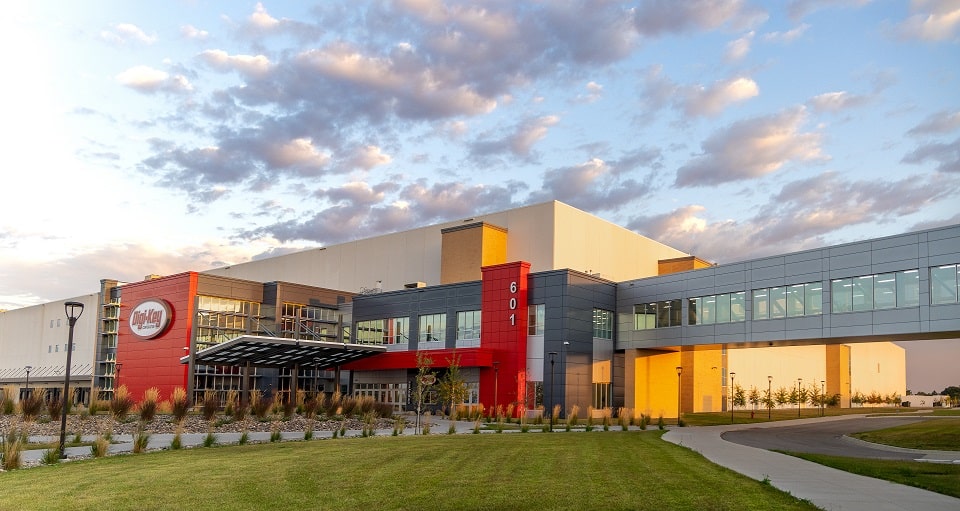The movie Apollo 13 showed the world how NASA engineers used an "Earth twin" of the damaged spacecraft to devise a way to bring back the astronauts on board. Since then, the notion of mating embodied in the effort of that miraculous rescue has developed and become more sophisticated. Its implementation is increasingly virtual in nature and has ultimately evolved into the practice now known as "digital twins." The term "digital twin" was first used by Dr. Michael Grieves of the University of Michigan (with respect to product development work done at NASA) in his book Virtually Perfect: Driving Innovative and Lean Products through Product Lifecycle Management (Virtually perfect: innovative products and adjusted in the management of the life cycle of the products). Simply put, digital twins are a dynamic virtual representation of a physical product.
Digital Twin Definition
Offering a starting point for creating the digital twin of an actual manufactured product, the wealth of data from 3D CAD systems provides the foundation for the development of an exact digital model and is, in fact, available long before the creation of a physical manifestation. However, in the early 2000s, the mechanisms for directly capturing information about individual drives at the time of manufacture were still relatively primitive. Only limited amounts of data were available with which to characterize the digital model, often on paper and collected manually. More recently, the increasing adoption of manufacturing execution systems (MES), which collect data from a wide variety of sensors, gauges, precision measuring instruments, inspection equipment, what is a vernier etc., has greatly increased the amount of information captured from manufacturing processes. Automating the processes of data collection, storage, and organization today makes it possible to build much more complex models and digitally reproduce the properties of the physical product with a much higher degree of accuracy.
democratization
The latest in information processing, especially the Internet of Things (IoT) and the rise of affordable, high-performance cloud computing, enables the cost-effective creation of digital twins that span the entire product lifecycle, including daily field operations. Additionally, the practice has become more accessible to companies much smaller than the large original equipment manufacturers (OEMs) and government-backed organizations that were among the early adopters of digital twins. Increased affordability can prompt more imaginative use cases to improve product design, time to market, management and maintenance, and the end-user experience.
Improvement in product creation
The exact models available allow product manufacturers to study digital twins to gain insights that can, in turn, be applied to improve many aspects of physical product creation, such as design features, selected components, supply chain. and the manufacturing processes used. You can also streamline new product development and save time and money by building and testing successive generations of products in a virtual environment, moving to physical manufacturing only when the latest iteration of the digital model meets all required specifications and is ready. fully optimized in operational terms. As Michael Grieves himself observed, moving pixels is much easier than moving atoms.
True predictive maintenance
Digital twins have been effectively applied to low-volume products that contain large numbers of parts or require extensive setup or adjustment work. Among the main examples we can find aeronautical engines or large gas or steam turbines used in power plants that use fossil fuels. The complexity of this type of system prevents operators from calculating the optimal time to take units offline for maintenance based on mean time between failures (MTBF) analysis.
Unplanned downtime is expensive in the case of electrical power generation and critical to safety in the case of aeroengines, which is why conventional maintenance is routinely carried out, often too frequently, with the aim of replacing vulnerable parts well before the end of their useful life. However, despite its price, this approach cannot predict when a particular component will fail, which carries the ongoing risk of an unexpected and costly outage. By contrast, digital twins, which can harness vast amounts of data from the sensors of their physical counterparts to create accurate predictive software applications, offer more cost-effective, state-of-the-art maintenance that takes into account a large number of related parameters. with existing operating conditions. These parameters may dictate that equipment exposed to heavy use, brief overloads, or environmental hazards (such as an aeronautical engine exposed to large amounts of volcanic ash on a specific route on a specific day) require maintenance earlier than recommended in the standard schedule, This strengthens safety and increases profitability by reducing unplanned downtime. On the other hand, if the data indicates less than usual wear (due to, for example, lower than expected activity levels), replacement intervals can be extended, reducing routine downtime without compromising service quality. nor increase the risk of failure.
More accurate management of remote assets
Cost-effective monitoring of remote assets is another major benefit of digital twins. The increasing pressure associated with the use of renewable energy sources has led to the construction of wind farms. Wind farms are often located in remote locations, in coastal areas or offshore, to take advantage of favorable wind conditions. The weather in such places can be extreme, and if, for example, storm damage is suspected, the expense (not to mention delays) of sending a team of technicians to check the condition of turbines or other teams can be tall. Having a digital twin of each wind farm resource, enriched with real-time data from a large number of sensors installed on the turbines and other physical infrastructure, allows experts to assess the condition (for example, structural weaknesses or damage). on electrical equipment) quickly and in detail to determine the best course of action. It may even be possible to fix some problems remotely. Or, if a site visit is deemed necessary, the necessary information can be forwarded in advance to the appropriate team and equipped to perform their task, avoiding the cost of multiple visits. Digital twins are also valuable under normal operating conditions. Applying real-time configuration and performance data to a digital twin allows each physical turbine to be tuned to optimize efficiency and reliability.
Better customer experiences
The democratizing effects of IoT and cloud computing allow the concept of digital twins to be applied in a more commercial way. Equipment vendors, such as manufacturing automation vendors, for example, can use it to deliver customer experiences that are superior to the benefits of standard usage-based maintenance. A digital twin of each machine in a customer's fleet can provide information that the supplier can use internally for future product development and gives them the opportunity to share individualized advice with users, such as ways to modify operator behavior to achieve enhancements, increase performance, or minimize equipment wear and tear or power consumption.
The future of digital twins
Historically, digital twins have run on powerful industrial Internet platforms, such as GE's Predix. More recently, the collaboration of GE and Microsoft to integrate Predix into Microsoft's Azure Cloud and the emergence of platforms such as software-as-a-service (SaaS) SAP Predictive Engineering Insights promise to greatly improve the accessibility and scalability of the twin technology. digital technologies, which, in turn, will make it possible to leverage artificial intelligence in the cloud to run numerous what-if scenarios. Based on this approach, digital twins have grown from a creative concept first used in the space industry to an exciting tool with great commercial appeal. The analysis company Gartner has ranked it among the 10 strategic technology trends of 2018, and predicts that billions of things will have digital twins by the beginning of the next decade.
According to a Research and Markets report, 75% of the executives surveyed plan to incorporate digital twins before 2020. IDC, for its part, predicts that, on average, companies will reduce the duration of critical process cycles by 30% thanks to the investment in digital twin technology. At a time when organizations strive to digitally transform, a digital twin can present a virtual model of a process, product, or service to encompass many functions, including facilitating business planning, providing a database of tests for digital experimentation or offer a plan for future improvement. Applications span the entire life cycle, so its scope will go beyond manufacturing and extend to countless sectors, such as smart buildings, health care, environmental management, oil and gas exploration, and smart cities.






